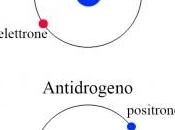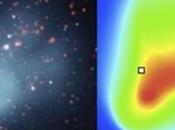Aggiornamento Ureteral Endometriosis
del 26-04-2011
AJR Am J Roentgenol. 2011 May;196(5):W635-40.
Biscaldi E, Ferrero S, Remorgida V, Rollandi GA.
Source
Department of Radiology, Galliera Hospital, Genoa, Italy.
Abstract
OBJECTIVE:
The objective of our study was to evaluate the accuracy of MDCT enteroclysis with a split-bolus technique in detecting ureteral compression caused by endometriosis in women with suspected bowel endometriosis.
SUBJECTS AND METHODS:
This prospective study included 103 patients with suspected bowel endometriosis. Examinations were performed on a 16-MDCT scanner; 20% of the IV contrast material was administered during colonic distention and intestinal hypotonization (i.e., 7-8 minutes before starting volumetric acquisition). After injection of the remaining quantity of contrast material, the volumetric acquisition was performed during the portal phase of contrast enhancement.
RESULTS:
The sensitivity of MDCT enteroclysis urography in identifying bowel nodules was 95.5%; specificity, 97.2%; positive predictive value (PPV), 98.5%; negative predictive value (NPV), 92.1%; accuracy, 96.1%; positive likelihood ratio, 34.39; and negative likelihood ratio, 0.05. The opacification was poor in 8.2% of the ureters, sufficient in 17.4%, and good in 74.4%. One hundred ninety-one ureters (92.3%) were opacified between the crossing of the iliac vessels and the bladder. Compression was observed at MDCT enteroclysis urography in 36 ureters (17.4%); surgery confirmed the presence of ureteral compression in 34 ureters (16.4%). The sensitivity of MDCT enteroclysis urography in identifying ureteral compression was 97.1%; specificity, 98.8%; PPV, 94.4%; NPV, 99.4%; accuracy, 99.0%; positive likelihood ratio, 83.54; and negative likelihood ratio, 0.03.
CONCLUSION:
MDCT enteroclysis urography allows radiologists to determine whether bowel endometriosis and ureteral compression are present without increasing the radiation dose imparted to the patient.
Fertil Steril. 2011 Apr 13. [Epub ahead of print]
A unique pathology associated with pelvic pain and adnexal mass.
Lim C, Hirshfeld-Cytron J, McCarthy C, Chen ZM, Milad MP.
Source
Northwestern University Feinberg School of Medicine, Department of Obstetrics and Gynecology, Chicago, Illinois.
Abstract
OBJECTIVE:
To present a unique case of pelvic pain.
DESIGN:
Case report.
SETTING:
Academic institution.
PATIENT(S):
Thirty-nine year-old with history of endometriosis presented with pelvic pain and possible adnexal mass.
INTERVENTION(S):
Imaging results were not consistent and suggested possible adnexal mass and hydrosalpinx in different studies. Physical exam was concerning for a vaginal mass that was felt not to be contiguous with the adnexa. At laparoscopy, a 3cm pararectal mass was identified immediately lateral to the uterosacral ligament and medial to the ureter. This mass was completely resected laparoscopically.
MAIN OUTCOME MEASURE(S):
Resolution of pelvic pain.
RESULT(S):
Pathologic diagnosis was ganglioneuroma. Postoperatively, the patient had resolution of her pelvic pain.
CONCLUSION(S):
Pelvic ganglioneuromas are a very rare entity but emphasize the importance of a broad differential for pelvic pain.
Gynecol Endocrinol. 2011 Apr 15. [Epub ahead of print]
Unusually rapid growth of bilateral endometriomas and acute bilateral hydronephrosis.
Gambadauro P, Olovsson M, Persson P.
Source
Department of Obstetrics and Gynaecology, Centre for Reproduction, Uppsala University Hospital, Uppsala, 75185, Sweden.
Abstract
Ultrasonography can detect ovarian endometriomas, but negative findings cannot exclude other localizations of endometriosis, especially in symptomatic patients. We describe a case of sudden development of large bilateral endometriomas after a series of negative ultrasound scans, causing bilateral hydronephrosis. Our patient is a 32-year-old nulligravida with long-lasting dysmenorrhea, urinary symptoms, and familiarity for endometriosis, who had voluntarily discontinued oral contraceptives. Various pelvic scans had not shown pathological findings. Five months following the last negative scan, she presented with pain and increase of abdominal girth. Ultrasonography and computed tomography showed large ovarian cysts (16 cm right – 10 cm left) and hydronephrosis bilaterally. She underwent conservative surgery followed by GnRH analogs. At a 6-months follow-up, she was symptom-free and ultrasonography showed no recurrence. Endometriosis has still an unknown mechanism of proliferation and its clinical behavior or progression is highly unpredictable. Severe uropathy is commonly related to direct ureteral involvement, but can also depend on an ab-extrinseco compression by large, rapidly growing endometriomas. Women at risk of endometriosis, who are not receiving empirical medical treatment, should be adequately and regularly assessed via pelvic ultrasonography and/or submitted to diagnostic laparoscopy in order to prevent serious consequences such as silent renal loss.
Urologia. 2010 Oct-Dec;77 Suppl 17:16-9.
Indications and limits to endourologic procedures for endometriosis of the urinary tract.
[Article in Italian]
Marino G, Piras D, Pedalino M, Di Primio OG, Vella R, Vercesi E.
Source
SC Urologia, SC Anatomia Patologica ASL T0 5 Chieri (Torino), Italy. [email protected]
Abstract
INTRODUCTION:
The incidence of Urinary tract endometriosis (UTE) ranges from 1% to 3%; bladder is the most affected organ (85% of UTE), followed by ureter (12 – 14% of UTE), for which we distinguish an intrinsic very rare form and an extrinsic variety most frequently occurring in advanced pelvic endometriosis.
MATERIALS AND METHODS:
From 1997 to 2010, 33 surgical procedures for urologic endometriosis were performed, involving the urinary tract, in 28 patients with mean age of 31 years (25-43). The localization of endometriosis were: 7 cases in the bladder, 2 cases in the vesicoureteral tract, and 19 cases of ureteral tract only. Of these, two cases were diagnosed with an intrinsic localization.
RESULTS:
Overall, we performed 3 TURB, 5 partial cystectomies (2 with open surgical approach and 3 by laparoscopy procedure), 12 laparoscopic ureterolysis and simultaneous protection of the upper urinary tract with stent, 9 cases of ureterocystoneostomy (UCNS) according to Lich-Gregoire procedure, and 3 according to Boari-Kuess procedure. Of the 12 patients who underwent ureterolysis with laparoscopic and stenting procedure, five cases required a UCNS according to Lich-Gregoire technique for persistent ureteral obstruction.
CONCLUSIONS:
The limits of endoscopic procedures in endometriosis of the urinary tract are correlated both to the degree of extension and the localization of the disease. It is mandatory to achieve an interdisciplinary consensus in order to ensure the disease removal and the simultaneous functional results of the upper urinary tract.
Fertil Steril. 2011 Apr;95(5):1574-8.
Haas D, Chvatal R, Habelsberger A, Wurm P, Schimetta W, Oppelt P.
Source
General Hospital Linz, Department of Obstetrics and Gynecology, Linz, Austria.
Abstract
OBJECTIVE:
To develop a classification that takes deep infiltrating endometriosis into account, the ENZIAN score was introduced. The ENZIAN classification supplements the revised American Fertility Society (AFS) score with regard to the description of deep infiltrating endometriosis, retroperitoneal structures, and other organs. The null hypothesis was that classifying a lesion by the revised AFS as well as the ENZIAN system is not meaningful, because the two systems express different locations.
DESIGN:
Retrospective.
SETTING:
Hospital admissions.
PATIENT(S):
Two hundred nineteen women admitted for endometriosis.
INTERVENTION(S):
Surgical interventions.
MAIN OUTCOME MEASURE(S):
Classification of the severity of endometriosis according to the revised AFS and the ENZIAN classification, focusing on the distribution pattern in deep infiltrating endometriosis, and the identification of duplicate classifications of the same lesions in the revised AFS as well as the ENZIAN systems.
RESULT(S):
Deep infiltrating endometriosis was diagnosed in 160 of 219 patients (73%). These patients had 236 lesions of deep infiltrating endometriosis, which were classified by ENZIAN as follows: compartment a (vertical): 26%; compartment b (horizontal): 41%; compartment c (dorsal): 24%; uterine adenomyosis: 4%; bladder disease: 2%; ureter disease: 1%; and bowel disease: 2%. The severity of deep infiltrating endometriosis according to ENZIAN (grades 1 = mild to 4 = severe) was as follows: grade 1: 45%; grade 2: 26%; grade 3: 19%; grade 4: 10%. Fifty-eight patients were classified according to ENZIAN although they did not fulfill the criteria of deep infiltrating endometriosis and had previously been classified according to the revised AFS classification. Adaptation of the ENZIAN score would reduce the diagnoses of deep infiltrating endometriosis by 36% (95% confidence interval [CI] 29%-44%).
CONCLUSION(S):
The ENZIAN score is a helpful aid to describe deep infiltrating endometriosis, but needs to be adapted.




